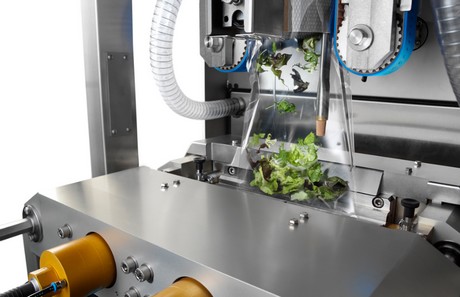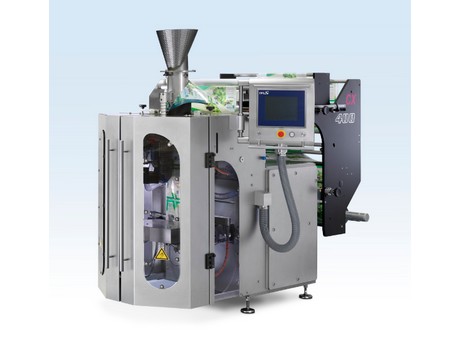Although ultrasonic bag sealing on vertical packaging machines has been available for several years, until recently the technique could not deliver consistent results with films as thin as 30 microns. These thinner films are in demand because not only do they cost less than thicker gauges, they also reduce the amount of landfill waste after the contents have been consumed. There is a strong lobby from governments, supermarkets and consumers to reduce the environmental impact of packaging materials.
GEA’s innovation is a technique that keeps the anvil (which forms together with the sonotrode the jaws to create an ultrasonic seal) extremely parallel. The gap between the closed jaws when sealing a 30-micron film is just 60 microns, which places extreme demands on the engineering tolerances of the assembly, and on the components that control its movement and alignment. Since a deviation from parallel of just microns at either end of the jaws can result in an incomplete seal, external factors such as climatic conditions can negatively influence the seal integrity.

The new GEA technology eliminates the effect of these external factors, thus ensuring the anvil remain parallel. It is incorporated into both intermittent and continuous operation versions of all GEA SmartPacker vertical packaging machines that are specified with the ultrasonic ‘Zero Reject Sealing System’.
Carla Verheijen, Product manager for the GEA SmartPacker, said, “Before we were confident that our machines could achieve a near zero reject rate with ultrasonic sealing, we had to overcome this technical challenge. The solution we developed has now proved itself in practice with our packaging machines working in the salad, cheese and stir-fry food sectors. We can proudly say we know how it’s done.”
Peter Rietjens added, “Our research into the technology revealed another factor that is critical for seal integrity. We discovered that even films with similar thickness and specifications can vary in composition and therefore sealing performance, so it is essential to know exactly what to use. To achieve this, we also offer the facilities to analyse a particular film, and determine how to get the best results with it.” At the company’s production site in Weert, the Netherlands, there is a fully equipped Technology Center with GEA SmartPackers that are available to run trials with customer-specific films and products.

The general benefits of ultrasonic sealing are widely known. Instead of using thermal energy to form a seal, the technology uses high-frequency ‘ultrasonic’ vibrations of the sonotrode to bond the two layers of film together at a molecular level. Even if moisture, a piece of leaf or a particle remain in the seal area, an air-tight seal is still possible. This makes automatic case packing possible without seal testing.
With conventional thermal sealing, these obstructions in the seal area prevent an air-tight seal being made. Now that GEA has overcome the remaining hurdle for using ultrasonic sealing with lower cost and more eco-friendly thin films, a wider range of application areas can benefit from the reduction in bag rejects and a shorter repeat length (the seal area is typically 70% smaller than with thermal sealing).
The company says a smaller seal area also results in a more attractive pack style.
With the right production conditions, a return on investment is possible within less than 1 and half years.
For the ultrasonic components, GEA works closely with Sonotronic, a leader in ultrasonic welding with 35 years’ experience. Advanced simulation software is also used to show exactly what happens on the machines as they operate at high speed, thus enabling the technology to be refined in the most cost effective way.





